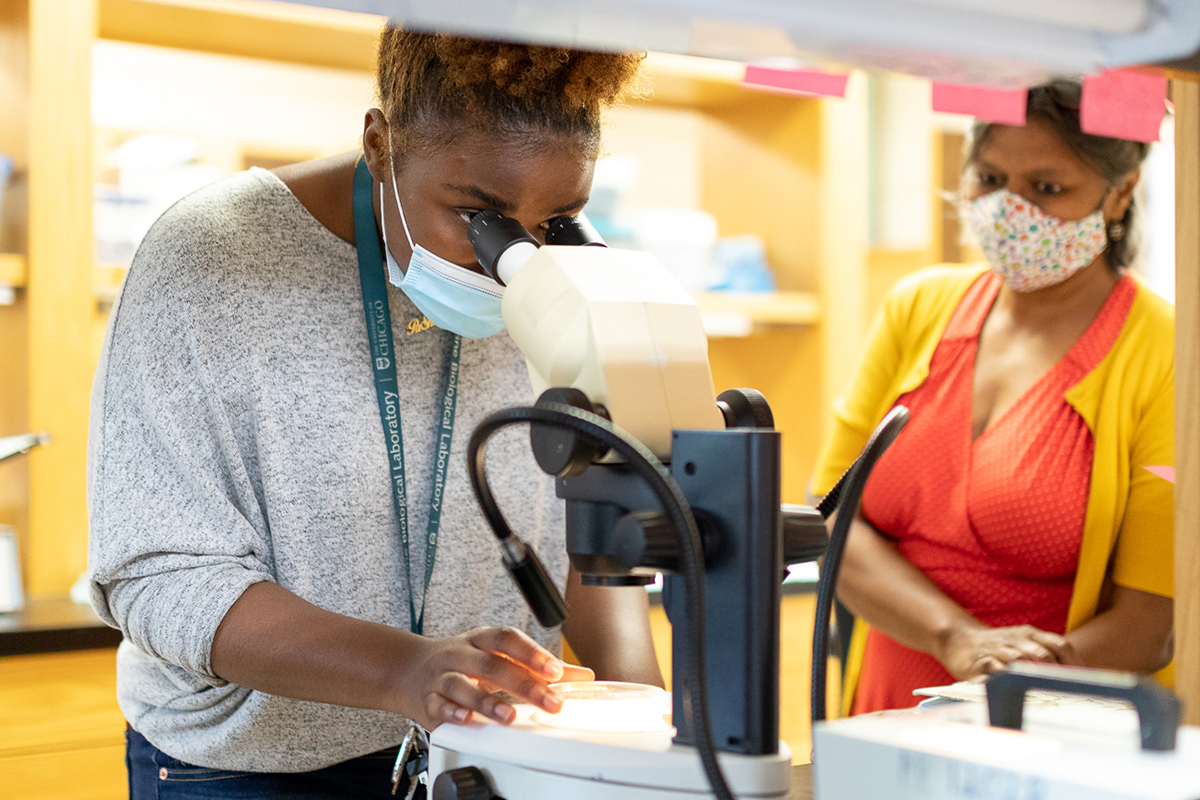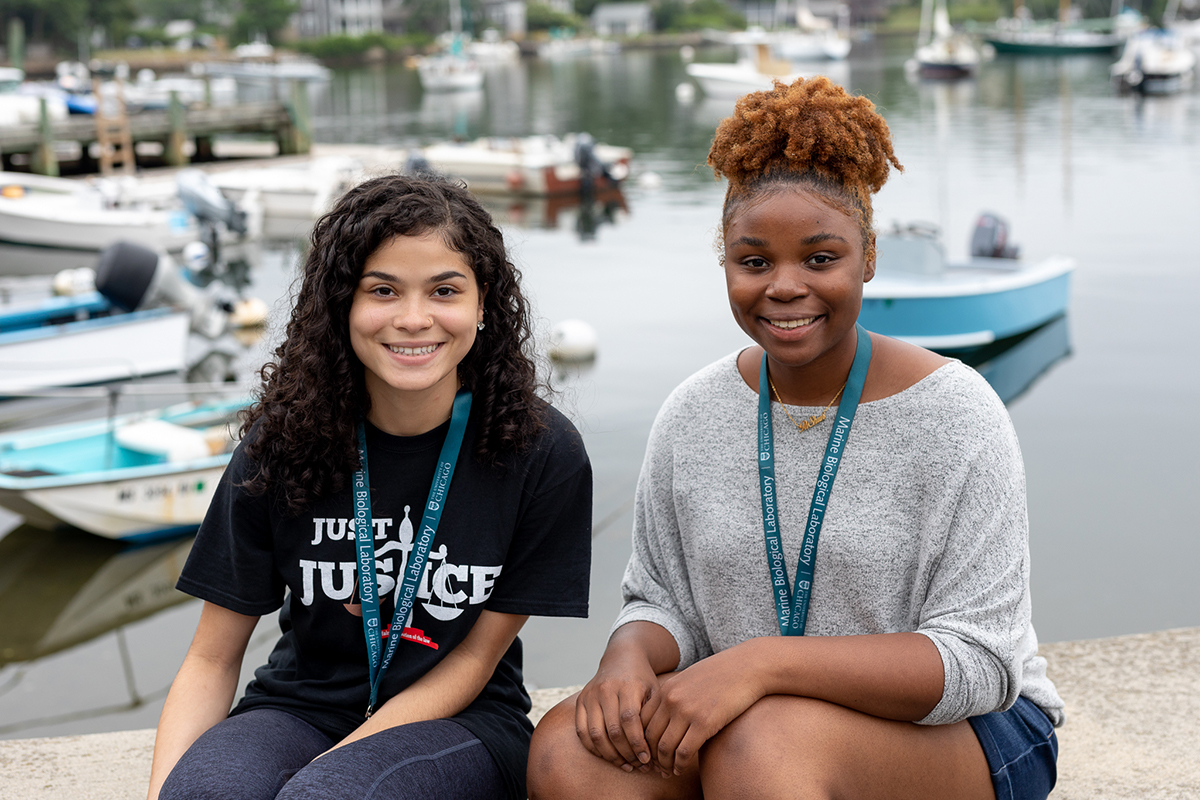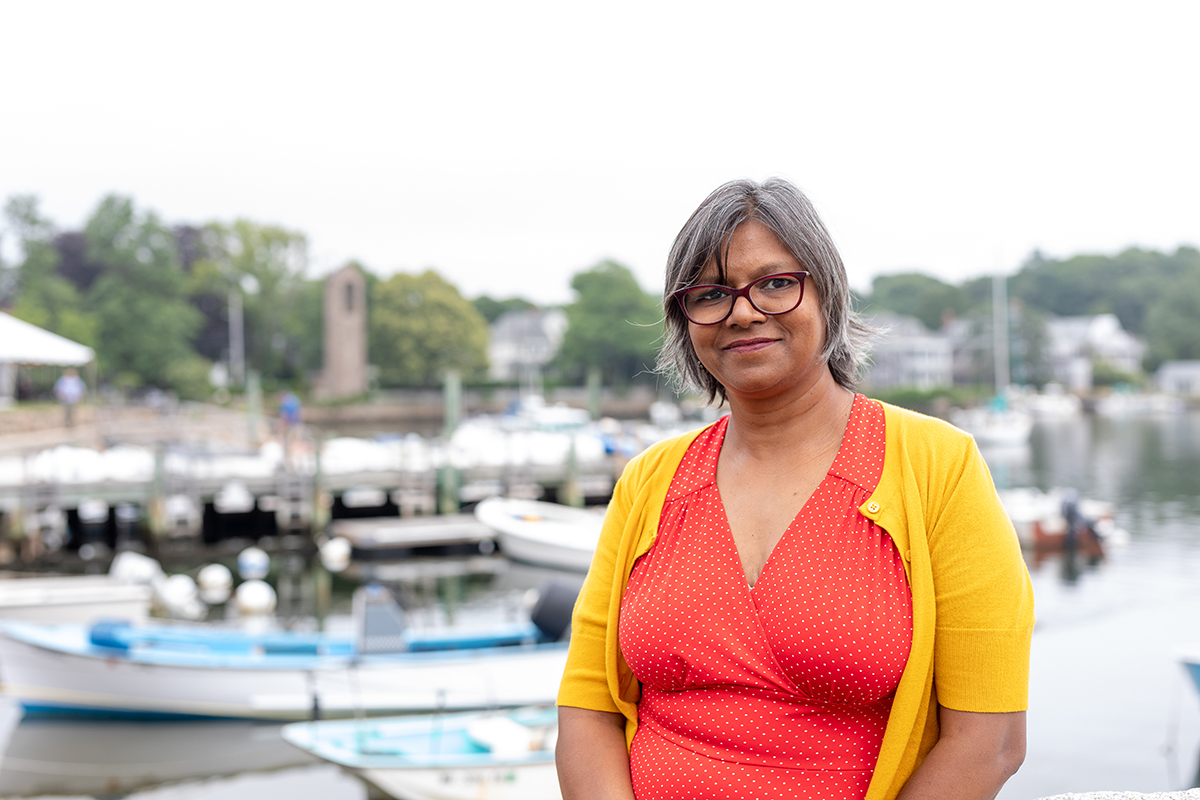Too Small to Eat? Indu Sharma, E.E. Just Fellow, Asks if Shape Helps a Microbe Survive

Three years ago at Hampton University, a historically Black university in Virginia, associate professor Indu Sharma and her students were excited to look at the deep-sea samples she had collected on a research cruise to the Atlantic slope. Are there any bacteria in there, they wondered? They released drops of seawater into petri dishes and allowed the culture to grow.
When they looked at it through a microscope, a curious sight emerged: tightly coiled, semi-circular cells that “didn’t look like a normal bacterial cell,” Sharma said. “They look like Cheetos!” her daughter later observed.
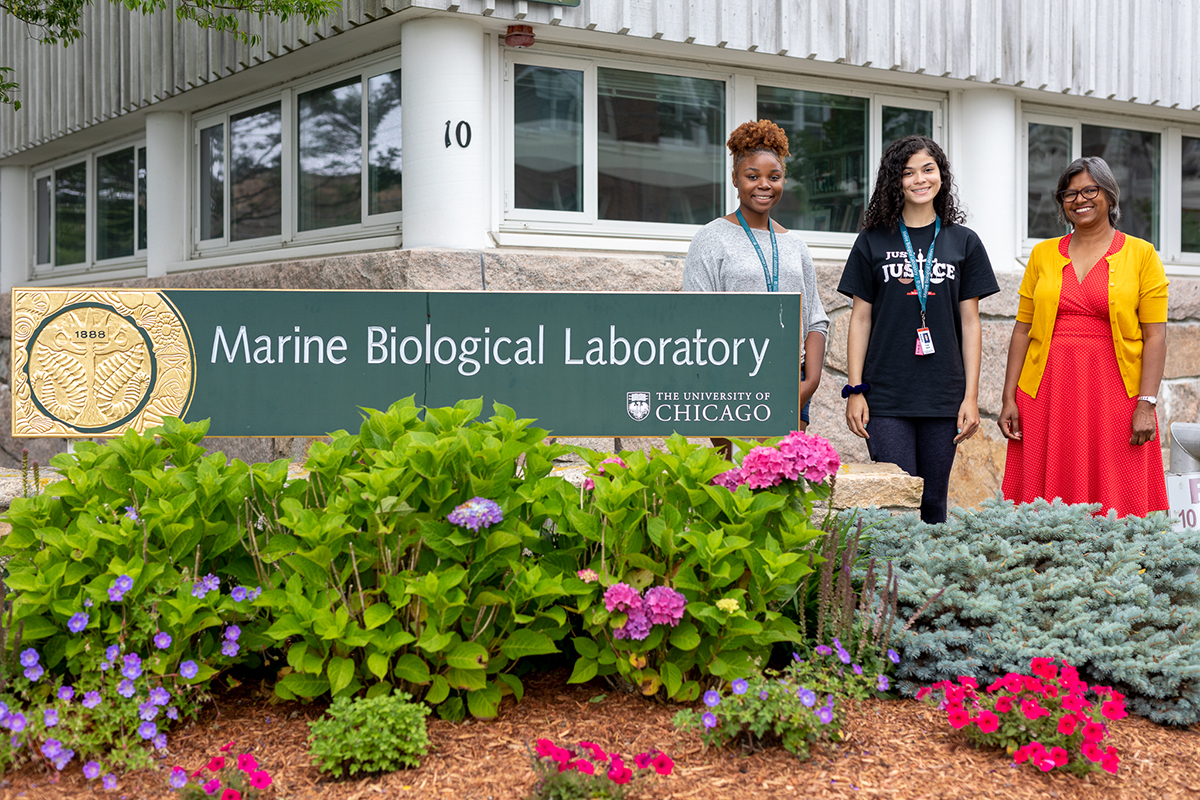 From left, Hampton University undergraduates Pa-Shun Hawkins and T’Kiyah Reeves are spending the summer at MBL with their biology professor, Indu Sharma, MBL’s 2021 E.E. Just Fellow. Credit: Dee Sullivan
From left, Hampton University undergraduates Pa-Shun Hawkins and T’Kiyah Reeves are spending the summer at MBL with their biology professor, Indu Sharma, MBL’s 2021 E.E. Just Fellow. Credit: Dee SullivanSharma returned to the MBL the next summer (she had attended the Microbial Diversity course in 2017). This time she was a student in STAMPS, during which she kept working with the oddly shaped bacterium, Cyclobacterium marinum.
“Mike Lee, who was on the course faculty, sat down and taught me how to assemble the genome,” she said (they published it in 2019). “And George O’Toole, co-director of Microbial Diversity, allowed me to grow Cyclobacterium in the course. We were able to gather some really cool electron microscopy images with the help of Kasia Hammer from the MBL Central Microscopy Facility. Those images really opened up the whole story.”
Now Sharma is back as an E.E. Just Fellow in the MBL Whitman Center, along with two undergraduates she brought from Hampton. And she is bearing down on a question sparked by discussions during STAMPS: Why does Cyclobacterium have that intriguing shape?
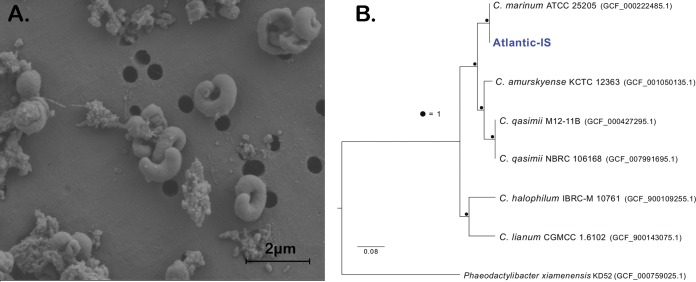 Images that Sharma captured at the MBL of the deep-sea microbe Cyclobacterium marinum led her lab to explore the “whys” of its unusual, deeply coiled shape. From Sharma and Lee, Microbiol. Resource Announc., 2019.
Images that Sharma captured at the MBL of the deep-sea microbe Cyclobacterium marinum led her lab to explore the “whys” of its unusual, deeply coiled shape. From Sharma and Lee, Microbiol. Resource Announc., 2019.“Most people think there are only two shapes of bacteria: rod and curved. There are many more,” Sharma said. “We started thinking about the ecological benefits or adaptations of Cyclobacterium having this compact, coiled shape. We hypothesize it evolved this shape to avoid predation: It’s too small to eat.”
To test this idea this summer, Sharma is feeding her bacterium to a variety of marine protists (microbes that have a nucleus) to see if they prefer larger or differently shaped cells. “Most of the protists have flagella that create tiny currents. Depending on how the Cyclobacterium is coiled, its shape may help it to escape through the currents,” she said.
 T’Kiyah Reeves prepares a bacterial culture in Indu Sharma’s lab in Lillie Laboratory. Credit: Dee Sullivan
T’Kiyah Reeves prepares a bacterial culture in Indu Sharma’s lab in Lillie Laboratory. Credit: Dee SullivanMarine Microbes and Mentorship
While she formerly studied parasites, Sharma’s lab is now happily revolving around Cyclobacterium. “These microbes provide a great platform to teach young minds,” she said. “We cultured this bacterium in 2018 and it resulted in these wonderful, longstanding questions. Why does it have this shape? What is the ecological advantage? What molecules are involved? Is it present everywhere, or does it have a selective niche? How does it adapt to changing nutrients? Half of its genes have no known function.”
The students she brought to MBL, Pa-Shun Hawkins and T’Kiyah Reeves, are both Marine and Environmental Science majors. But this is their first exposure to microbiological lab work.
“I really enjoy it,” said Pa-Shun as she prepared a liquid culture of bacteria in Sharma’s lab in Lillie. “It’s very hands-on, sterile, technical. I love seeing the little protists moving in the microscope. A lot of people go into the medical side of microbiology, but I’m interested in how microbes interact in the environment.”
T’Kiyah, for her part, became intrigued by amoebas so Sharma said, “Do you want to study them?” She pointed T’Kiyah toward the MBLWHOI Library to do a literature search and learn different ways to approach their study.
“I think students need to learn the basic concepts, especially through hands-on training, and then they should have the freedom to explore a short question,” Sharma said. “The training wheels come off and advancement of the project lies on their shoulders. Their curiosity is driving them! I think this ownership and science identity is necessary to pursue a career in STEM.”
In her lab at Hampton, undergraduates usually stay one or two years, and the older ones train the new ones. “It becomes a cycle with peer mentoring going on,” she said. “It helps them to create a safe niche. And some have gone on to graduate school.”
Pa-Shun and T’Kiyah are having a great time at MBL, where they are interacting with other undergraduates in the REU-Biological Discovery in Woods Hole program.
“The history of the MBL has really impacted me, even the African-American history here,” said T’Kiyah, who is thinking of pursuing a career in environmental justice. “I am astounded by the amount of work that has come out of this institution. And having the other Woods Hole science institutions nearby – so many people with so many different backgrounds!”
“MBL is a place where science happens, collaborations form, impossible ideas become reality,” Sharma said. “I think it attracts like-minded people who want to think outside the box. Over the years, I’ve developed a lot of personal and professional contacts here.”
The MBL spirit was evident when Sharma gave a research talk at the Whitman Center Brown Bag Lunch series. When she mentioned she had just been awarded her second National Science Foundation grant -- to explore how Cyclobacterium adapts its machinery to changing carbon sources– the gathering of scientists greeted the news with cheers and a round of applause. And then they suggested imaginative ways she might address her research questions!
